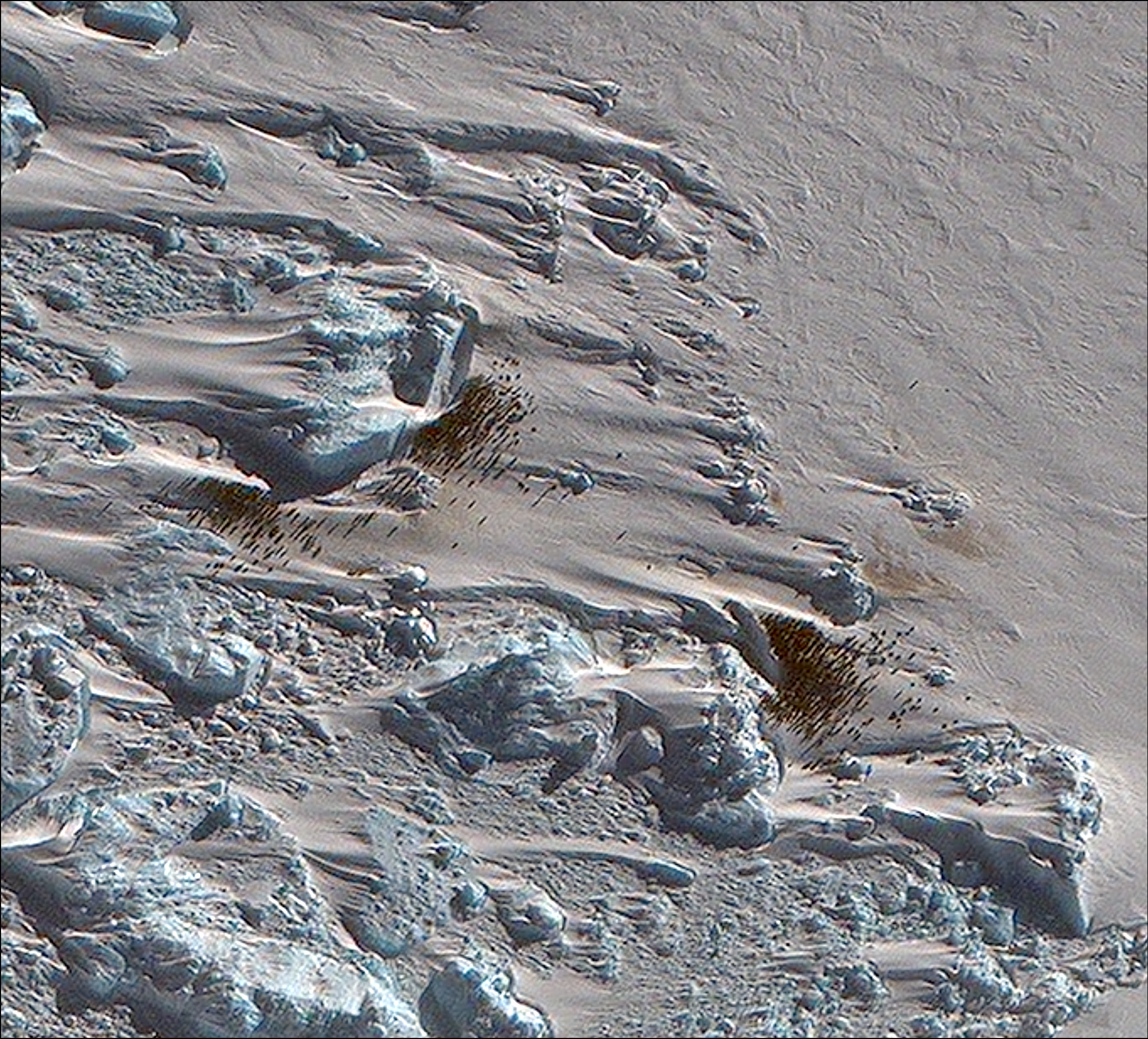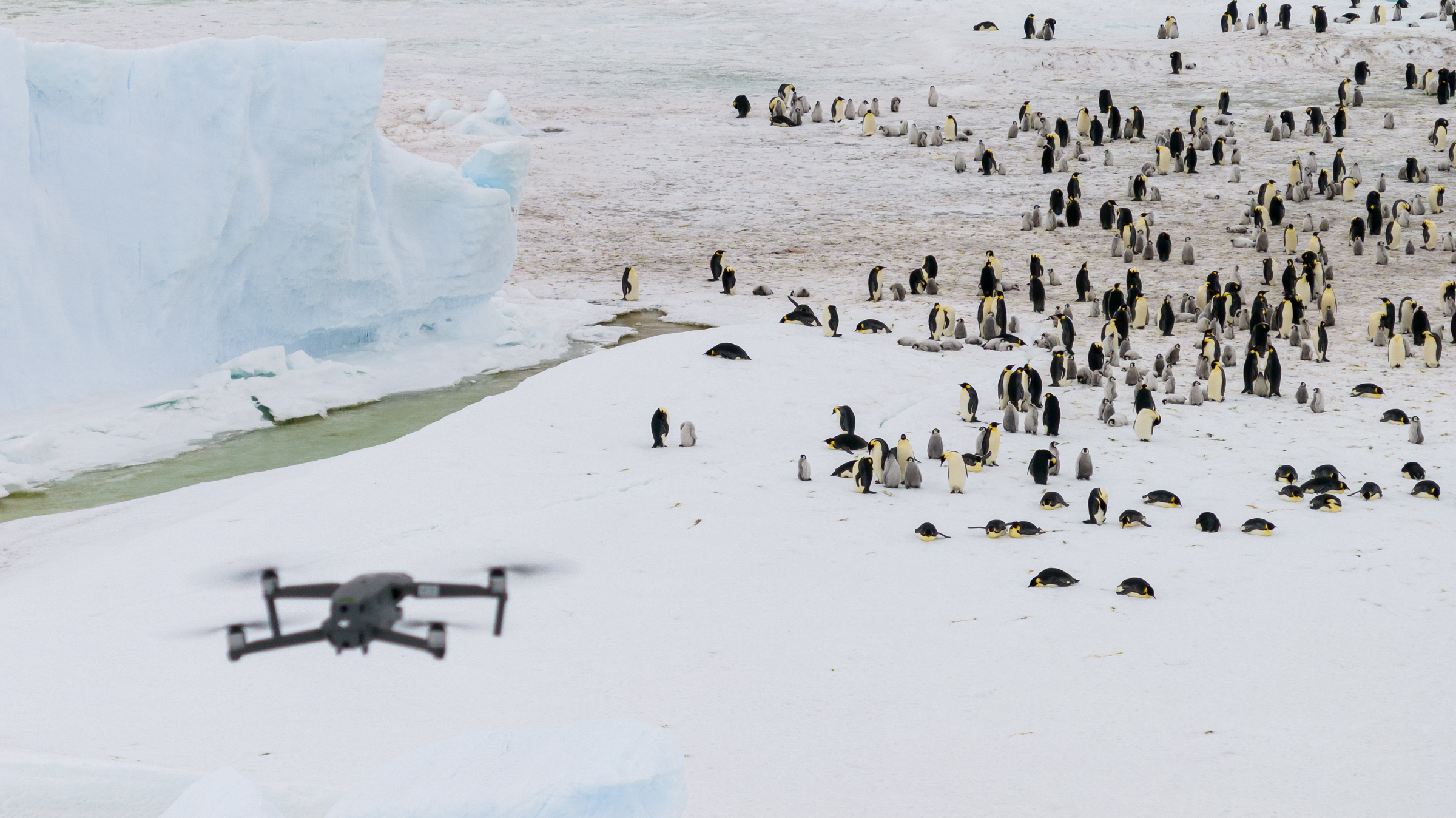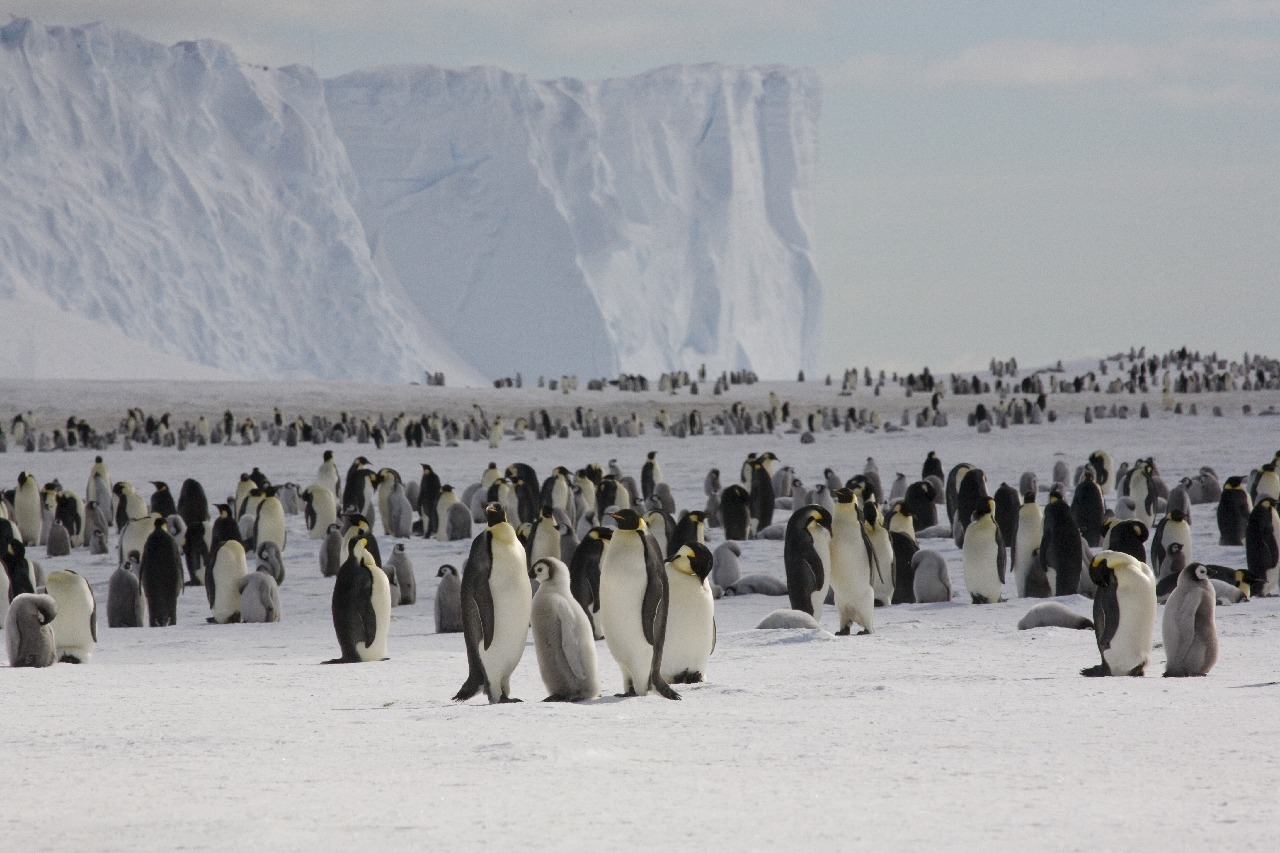This week (Thursday 2 May), British Antarctic Survey (BAS) is inviting the public to become 'penguin detectives' and spend five minutes counting emperor penguins to help with vital research into these iconic animals.
To understand more about how emperor penguins are being affected by our changing climate, researchers use satellite images to monitor remote emperor penguin colonies; the brown stains of the birds' guano stands out clearly against the stark white of ice and snow.

Now, researchers at BAS have launched the 'Polar Observatory' on Zooniverse - an online citizen-science platform - to recruit 'penguin detectives' to help validate how accurate these satellite images are as a tool for monitoring penguin populations.
The images in the app are drone photos taken over the Snow Hill colony of emperor penguins, an island to the east of the Antarctic peninsula, taken in November 2023. The breeding site, home to around 6000 penguins, regularly sees warmer temperatures than other colonies, and so may act as an indicator of the pressures other sites will face in the future.

The drone images have been split into more than 300 10-metre squares and participants are asked to identify any adult and chick emperor penguins in a given picture. Each image will be checked by at least 15 different people to generate an accurate location for each penguin. The results of this study will then be fed into machine learning algorithms to train artificial intelligence algorithms in order to automatically count penguins on future surveys.
Record low-levels of Antarctic sea ice are leading to breeding failures in several of Antarctica's emperor penguin colonies. Emperor penguins breed and raise their chicks on land-fast sea ice - stable sea ice that is attached firmly to the shore. If this ice breaks up too early, the chicks go into the sea before they grow their waterproof feathers. This leads to high, or sometimes total, chick mortality.
Since 2016, Antarctica has seen the four years with the lowest sea ice extents in the 45-year satellite record, with the two lowest years in 2021/22 and 2022/23. Between 2018 and 2022, 30% of the 62 known emperor penguin colonies in Antarctica were affected by partial or total sea ice loss. Although it is difficult to immediately link specific extreme seasons to climate change, a longer-term decline in sea ice extent is expected from the current generation of climate models.

Current predictions suggest that in scenarios in which greenhouse gas emissions continue to rise at current levels, the population of emperor penguins will fall by 99% by the end of the century, leading to the virtual extinction of this charismatic animal.
Peter Fretwell, who studies wildlife from space and is a Geographic Information Officer at BAS, says:
"This is a really exciting opportunity for aspiring conservationists, or anyone who just loves this iconic bird, to help us learn more about the future of the species. Not only will you be counting penguins in Antarctica, you'll also be helping researchers to accurately monitor penguin populations in the future - from space!"
If you'd like to get involved, visit the Polar Observatory. Please be aware, the app works best on a desktop.






